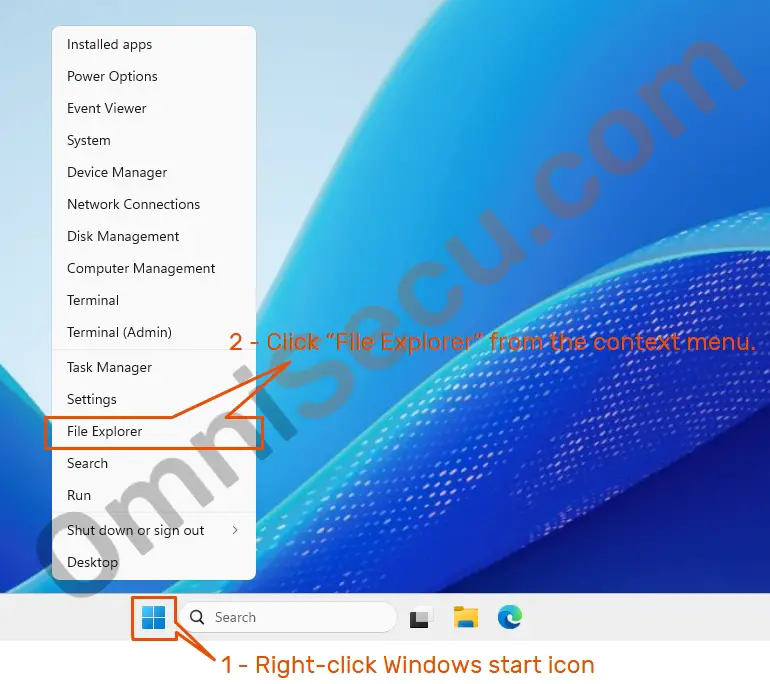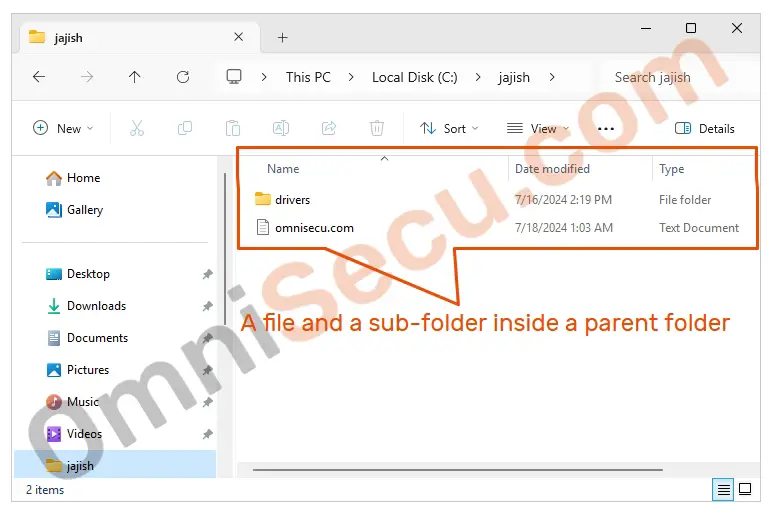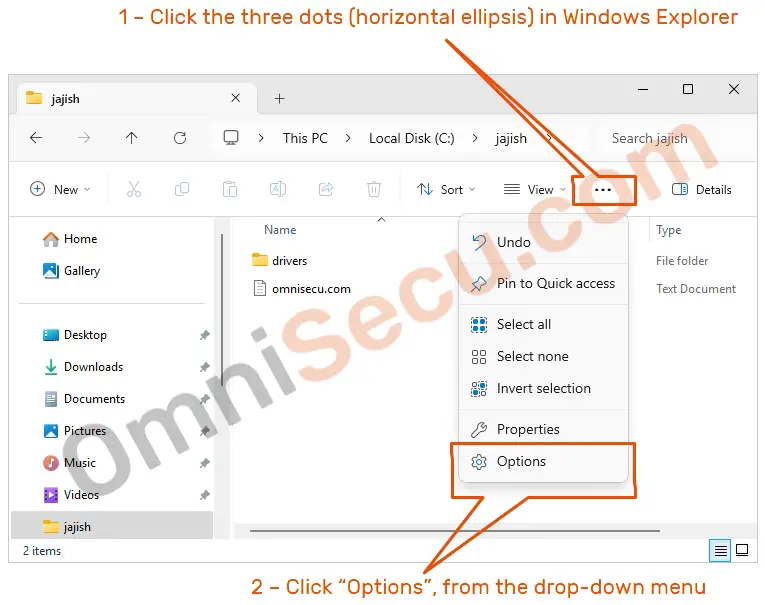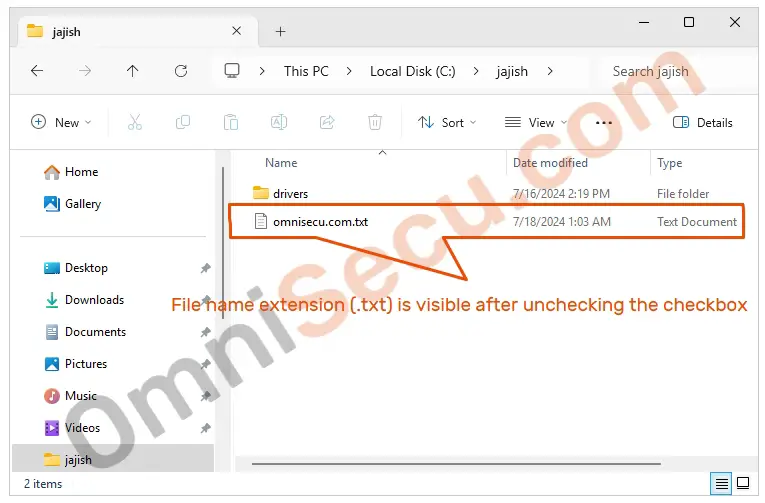Hide or Show known file name extensions in Windows Server 2025
What are file extensions in Windows Operating Systems
File names in Windows Operating Systems, including Windows Server operating systems are made of two parts. First part is the name of the file and the second part is called as the file extension. The first part and the second part are separated by a period ( . ) character. The purpose of file extension is to identify the file type. Usually, the second part is made of a three or four characters extension part, added to the file name. But single–character and five–character file extensions are also available. Examples of single–character and five–character file extensions are .c (C language file extension) and .accdb (Access 2007 database file extension).
An example of a file extension is txt, used to identify plain text files in Windows Operating Systems. In the filename omnisecu.txt, txt is the file extension. Please refer below image.

I suggest you to visit the following links also, to learn more about the following topics.
• What are file name extensions
• What are known file extensions and how to view known file extensions
• How to associate a file name extension with an app
File extensions for known types of files are hidden by default in Windows Server 2025. In this lesson, let us learn how to hide or unhide the extensions or known types of files in Windows Server 2025.
Step 01 – Open File Explorer in Windows Server 2025 by right–clicking the Windows start button and then selecting "File Explorer" from the context menu, as shown in the below screenshot.

Step 02 – Windows File Explorer will be opened as shown in the below screenshot. There is a file and a folder kept inside a parent folder. The name of the file is "omnisecu.com.txt", which is a text file. The extension part of the file name ".txt" is hidden, because the Windows File Explorer is configured to hide known file extensions.

Step 03 – Click the three dots (horizontal ellipsis) in Windows Explorer. Click "Options" from the drop–down menu, as shown in below image.

Step 04 – Open "View" tab in Folder Options and uncheck "Hide extensions for known file types" checkbox, to make the file extensions visible. Click "Apply" and then "OK" buttons to show extensions of known file types.
 Please note that when the "Hide extensions for known file types" checkbox is checked, the extensions for the known file types are hidden. If the "Hide extensions for known file types" checkbox is unchecked, the extensions for the known file types are visible.
Please note that when the "Hide extensions for known file types" checkbox is checked, the extensions for the known file types are hidden. If the "Hide extensions for known file types" checkbox is unchecked, the extensions for the known file types are visible.

Step 05 – File name extension (.txt) is visible after unchecking the "Hide extensions for known file types" checkbox. Please refer below image.

You may follow the same steps and check the "Hide extensions for known file types" checkbox (refer Step 04), if you want to make the file name extensions hidden again.
Written by Jajish Thomas.
Last updated on 23th July, 2024.